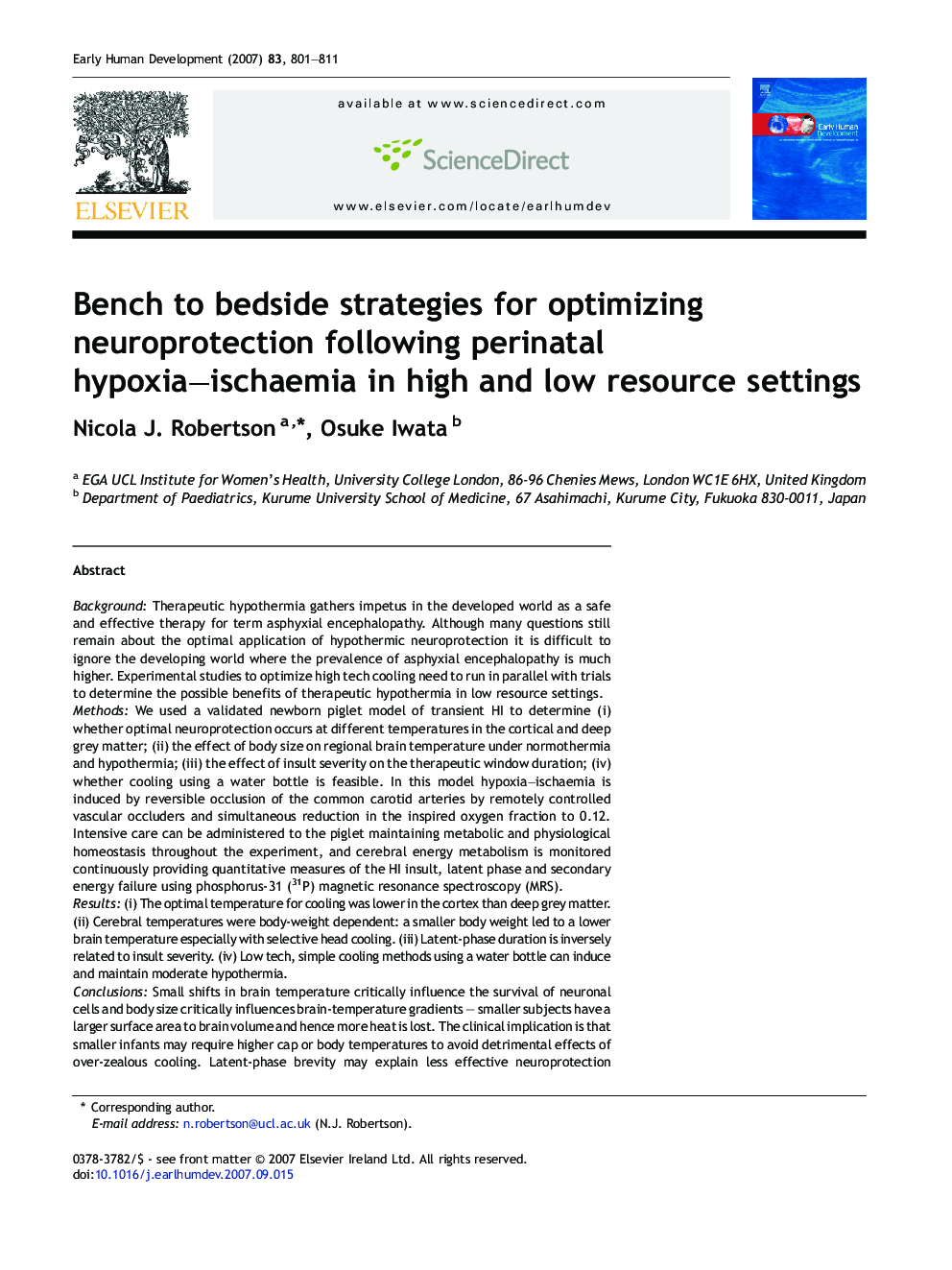| Article ID | Journal | Published Year | Pages | File Type |
|---|---|---|---|---|
| 3918300 | Early Human Development | 2007 | 11 Pages |
BackgroundTherapeutic hypothermia gathers impetus in the developed world as a safe and effective therapy for term asphyxial encephalopathy. Although many questions still remain about the optimal application of hypothermic neuroprotection it is difficult to ignore the developing world where the prevalence of asphyxial encephalopathy is much higher. Experimental studies to optimize high tech cooling need to run in parallel with trials to determine the possible benefits of therapeutic hypothermia in low resource settings.MethodsWe used a validated newborn piglet model of transient HI to determine (i) whether optimal neuroprotection occurs at different temperatures in the cortical and deep grey matter; (ii) the effect of body size on regional brain temperature under normothermia and hypothermia; (iii) the effect of insult severity on the therapeutic window duration; (iv) whether cooling using a water bottle is feasible. In this model hypoxia–ischaemia is induced by reversible occlusion of the common carotid arteries by remotely controlled vascular occluders and simultaneous reduction in the inspired oxygen fraction to 0.12. Intensive care can be administered to the piglet maintaining metabolic and physiological homeostasis throughout the experiment, and cerebral energy metabolism is monitored continuously providing quantitative measures of the HI insult, latent phase and secondary energy failure using phosphorus-31 (31P) magnetic resonance spectroscopy (MRS).Results(i) The optimal temperature for cooling was lower in the cortex than deep grey matter. (ii) Cerebral temperatures were body-weight dependent: a smaller body weight led to a lower brain temperature especially with selective head cooling. (iii) Latent-phase duration is inversely related to insult severity. (iv) Low tech, simple cooling methods using a water bottle can induce and maintain moderate hypothermia.ConclusionsSmall shifts in brain temperature critically influence the survival of neuronal cells and body size critically influences brain-temperature gradients — smaller subjects have a larger surface area to brain volume and hence more heat is lost. The clinical implication is that smaller infants may require higher cap or body temperatures to avoid detrimental effects of over-zealous cooling. Latent-phase brevity may explain less effective neuroprotection following severe HI in some clinical studies. “Tailored” treatments which take into account individual and regional characteristics may increase the effectiveness of therapeutic hypothermia in the developed world. Low tech cooling methods using water bottles may be feasible although adequate staffing and monitoring would be required.
